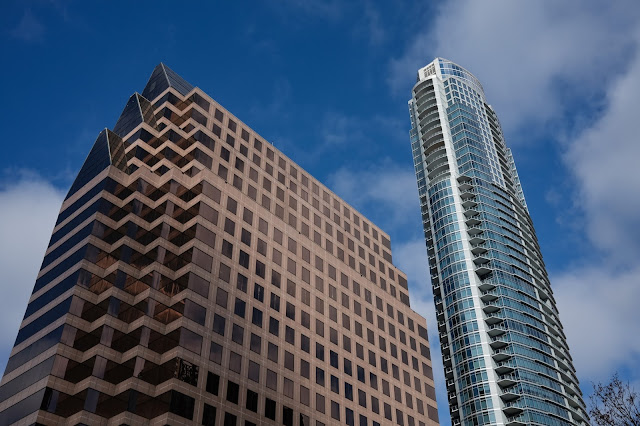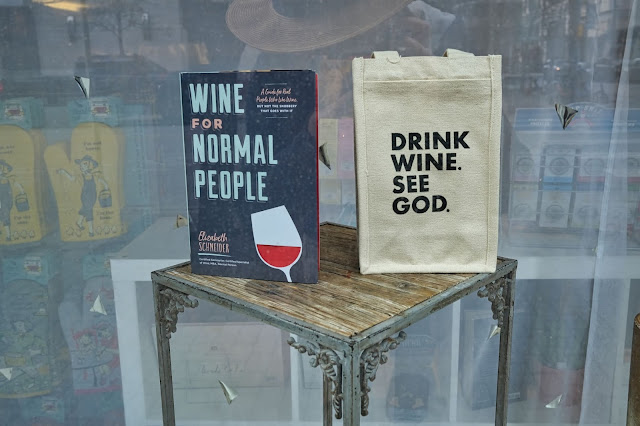B. at the museum.
One thing that I thought I would miss when using the Fuji X-100V was image stabilization. Surprisingly, I don't. I'm letting the camera range through the ISOs instead and keeping the minimum shutter speed at 1/60th of a second. Seems I have no problem hand-holding the camera well enough at that shutter speed and so far none of my images have been compromised by camera shake. It's interesting because we've come to believe that image stabilization is so critical. I'll admit that it's almost mandatory for me when using longer lenses but shorter focal lengths seem to have a quantum of immunity from the effects of camera shake.
I didn't realize how much I missed working with a small, discreet and non-confrontational camera; especially one in consumer happy chrome finish instead of sneaky-stealth, black finish. The camera and lens are capable of high sharpness when used wide open at most distances. I haven't done too many shots within three feet of the camera but I've found that if I get close and stop down to about f2.8 the sharpness continues right on through.
Yesterday we took a break from the political madness and spent the morning at the Blanton Museum. It's open but you have to sign up for a slot. You are only time limited by their closure from 12-1pm. Come at 10 a.m. and you'll have the run of the place till noon. Come at 1 p.m. and you'll have access to the full facility until closing time. It's nice to look at beautiful art as an antidote for contemporary anxiety. I find the abstract expression show in the main gallery particularly soothing.
Bare trees at Barton Springs Pool parking lot.
This morning I decided to break with tradition, skip my usual morning swim workout, and head out for an extended walk. I wanted to spend more time getting up to speed with the Fuji X-100V. I have one thing I haven't been able to figure out just yet. If I select "S" setting for focus and "still image" on the drive mode, with the review off, the camera blacks out until it writes the frame I just shot and locks me out of rapidly shooting another one. But when I was in the "classic chrome" profile I could shoot in the normal way, pounding out two or three frames without black out. It seemed like it was only in the "standard" mode that the camera became so deliberative and slow. Any ideas?
Barton Springs Pool was closed for most of last year.
It's life affirming to see lap swimmers enjoying the cool, clear water
in the middle of the winter. More like this...
The trail is not really closed. It's only the eroding bank that's off limits.
I guess they only have a small variety of signs available.
That's okay. It's all pretty obvious.
the camera is downright spiffy for big building shots.
When I punch in the detail is pretty nice. Rivals my bigger cameras and it's so much
fun to carry around. You won't wreck a shoulder with this one.
I love how considerate some drivers can be. Stopping behind the crosswalk is an appropriate
and polite gesture. It always makes me happy when my rights are upheld and
we all get to happily share the public space.
Some drivers are not so kind. They position their cars right in the middle
of the pedestrian cross walk while waiting for the light to change
at a four way intersection. I like to think they are just being absent-minded but
I really think drivers who routinely do this are mostly just being assholes.
I guess, in the long term the messaging might be accurate, a lifetime spent drinking lots of wine
might have you ending up in heaven but I think you might be accelerating the process
if you drink wine to excess. Nice to see God. But maybe just for a quick visit while
taking care of business in the here and now. Time for a good, long, chatty conversation
later. Much later.
The single ugliest pair of trousers I have ever seen.
And I lived through the 60's and 70's.
Just ghastly....
That's a nice Ellsworth Kelly painting on the right hand side of the frame.
See how crowded the museum was yesterday? It was a wonderful time
to visit. I could sit on that bench and look at the Kelly painting for
a good long while and not get bored.
All with the chrome finished X-100V.


















































